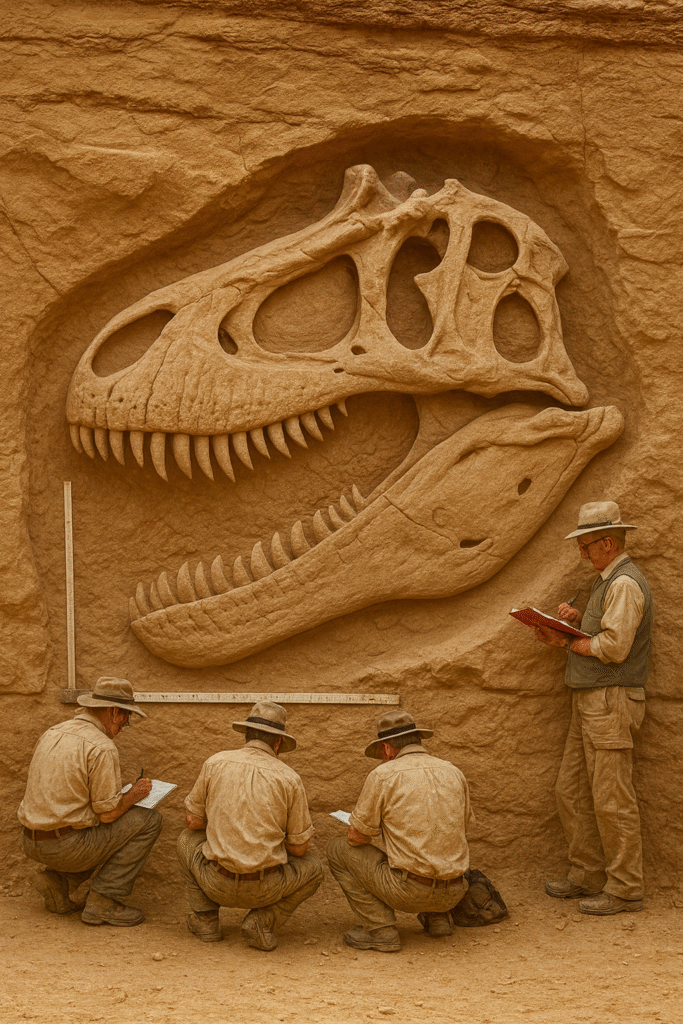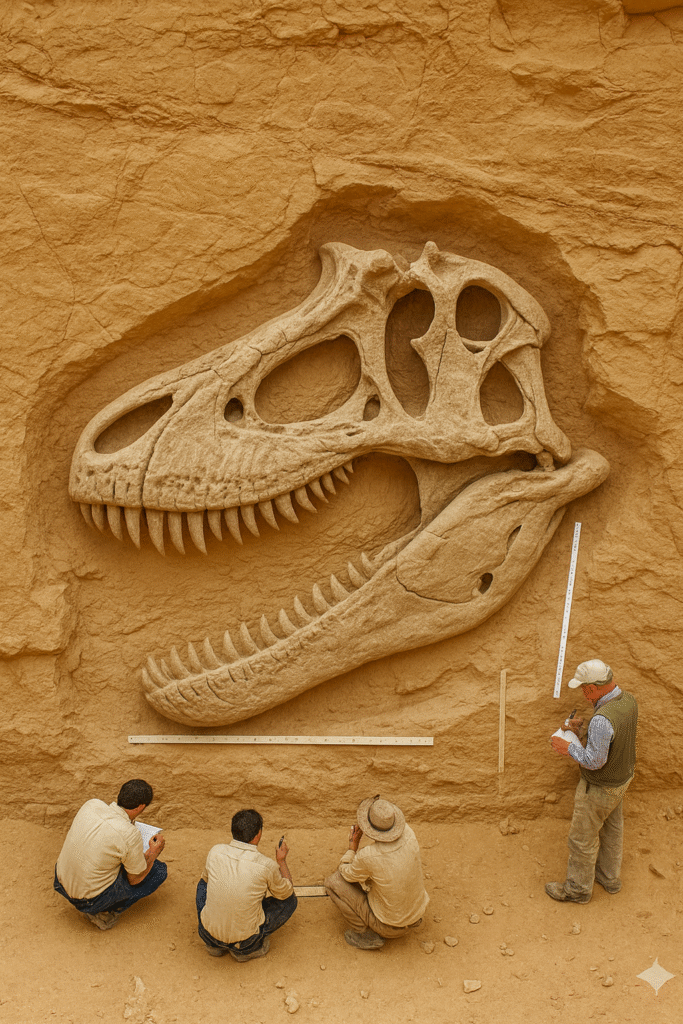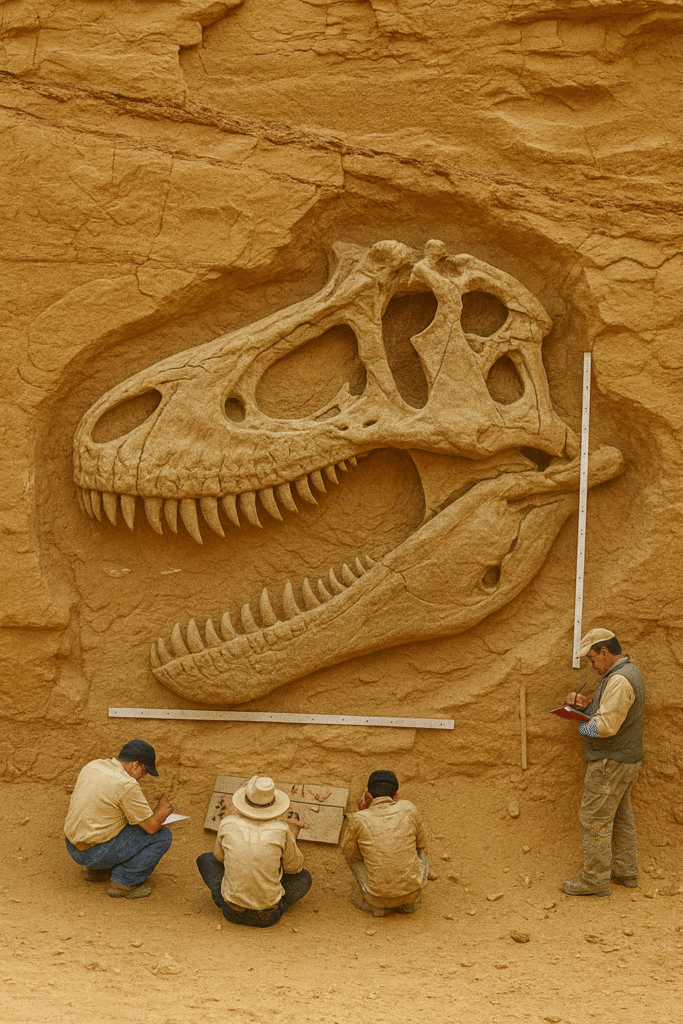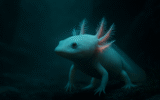In the heart of a desolate plateau where the desert wind sculpts dunes into fleeting patterns, a discovery has emerged that is as enigmatic as it is monumental: a vast serpent effigy, its body etched into the bedrock, coils stretching nearly one hundred meters across the sand-swept landscape. The head, carved with haunting precision, reveals fangs so jagged and lifelike that researchers remain divided on their origin. Are these truly the fossilized remnants of a creature lost to time, or the product of human hands wielding tools with a mastery far beyond what history records?
A Monument in the Middle of Nowhere
What has baffled experts most is not simply the effigy’s staggering size, but its placement. The site lies deep within a barren desert expanse—miles from the nearest known ancient settlement and in an environment long thought inhospitable to sustained human life. No obvious pathways lead to it, no remnants of villages or ritual sites surround it. The serpent exists in solitude, a silent sentinel guarding its own secrets.

For archaeologists, this isolation presents a vexing puzzle: if the effigy was carved by ancient hands, who built it, and why here? Some suggest it was a sacred marker, a beacon guiding lost travelers across the sands. Others argue it was a ritual monument, a shrine to forces of nature or gods that demanded reverence. Still others whisper of something older—something alive.
Fossil or Folklore?
The debate over the effigy’s origin has sparked a storm across scientific and cultural circles. Geologists point to striations within the stone, claiming that what appear to be “fangs” may, in fact, be fossilized remnants of a massive prehistoric reptile, entombed in the desert floor for millions of years. If true, the implications would be staggering: evidence of a creature larger and more fearsome than any serpent yet catalogued.
Anthropologists, however, see artistry rather than biology. The symmetry of the carving, the deliberate alignment of its coils with celestial markers—sunrise at solstice, the arc of Orion’s belt—suggest intention, not accident. Could this be the work of an ancient civilization, one whose existence has been forgotten but whose reverence for the serpent endured through legend?
The Weight of Myth
For centuries, cultures across the globe have woven serpents into their myths. In Mesopotamia, the serpent was chaos and renewal; in Mesoamerica, the feathered serpent was god and creator. In African and Asian traditions, serpents were both protectors and destroyers—symbols of wisdom, fertility, and death.

The newly unearthed effigy seems to echo these stories, as if carved not only in stone but into the collective human memory. Villagers from nearby oases speak of ancient tales passed down through generations—of a “sand dragon” that once slept beneath the desert, stirring only when the earth trembled. Whether myth or memory, these voices lend the effigy a resonance that transcends its physical form.
A Mirror to Ourselves
Beyond the scientific debates and folkloric whispers, the serpent challenges us to consider how we relate to the past. Do we see in it a beast that once dominated the Earth, now silenced by time? Or do we see the ingenuity of human ancestors, compelled to etch their fears and beliefs into stone so that they might outlive them?
Perhaps the serpent is both: a convergence of natural wonder and human imagination. Its presence blurs the line between history and legend, forcing us to ask whether the boundaries we draw between the two are as solid as we believe.
History as a Spiral
In the end, the colossal serpent effigy is more than a puzzle awaiting resolution. It is a reminder that history does not unfold in a straight line but coils upon itself, like the very creature it depicts—spiraling back, repeating, reshaping with each new discovery. What lies beneath the sands may not only redefine the past but also illuminate the present, revealing how deeply myth and memory continue to shape our understanding of the world.

As the desert wind sweeps over its stone coils, the serpent gazes eternally at the horizon—a monument to mystery, to power, and to the enduring hunger of humanity to uncover what has long been buried.


Reply